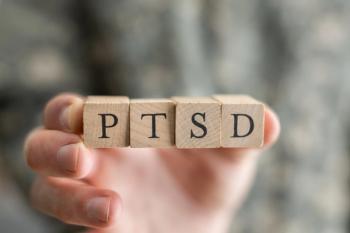
- Vol 40, Issue 10
You Have to Say Hello Before You Can Say Goodbye
Residues of past traumatic events can deeply impact our present experiences and our functioning in ways that we are not aware of consciously. We must process and let go of these experiences in order to heal.
FROM THE EDITOR
I reflect with appreciation on the eclectic residency training I received at the UMass Medical Center’s Department of Psychiatry in Worcester. Each week was filled with hours of supervision, residency groups, didactic education, supervised clinical practice, and self-learning. By intent, the supervisors were diverse in their training and expertise, representing psychoanalytical, psychodynamic, cognitive behavioral, group-focused, family-focused, and biological psychiatry. The older I get, the more I appreciate how these experiences converge to inform my assessment and treatment of patients, and they all serve to help craft an understanding of each patient’s presenting symptoms and the context in which they live.
During medical school and residency, I also had the privilege of working with Jon Kabat-Zinn, PhD, the person who fiercely followed his heart and introduced the practice of
Jon introduced me to the Insight Meditation Society (IMS) in Barre, Massachusetts, which was founded in 1975 as a residential center for mindfulness meditation practitioners to deepen their practice by attending retreats. The retreats varied in length, ranging from 3 days to 3 months, which accommodated various schedules and interests.
During my 4 years of psychiatry residency, I learned a great deal about the human mind and, most importantly, about myself, and I experienced and explored a range of human emotions—the good, bad, ugly, and painful. I found mindfulness meditation practice reinforced this process of self-inquiry and contributed to the mind structure of what I believe to be me.
Upon completion of my residency, instead of jumping into a job, I attended a 3-month mindfulness meditation retreat at IMS. We practiced mindfulness for 14 hours per day, with no eye contact or talking. The exceptions were two 10-minute interviews per week in which attendees met one-on-one with a teacher at IMS. Every evening, a teacher would present an hourlong talk on some aspect of the practice of mindfulness. It was intense.
Over the years, I have come to recognize a unified approach to healing between these modalities, even though individuals choose these approaches for very different reasons. The settings are remarkably different: One is a weekly, therapist-led
An experienced psychotherapist (yes—even psychiatrists) is well aware of the defenses (eg, suppression, repression, denial, avoidance, projection, regression, rationalization, and dissociation) our minds use to protect us from painful emotional residues from the past. Thus, my challenge as a psychiatrist is choosing how to proceed during the treatment process. For patients who are fragile and vulnerable for a range of reasons, it may be psychologically harmful to bring these memories to the surface. When symptoms are significant, prescribing an appropriate medication may be the most skillful intervention. However, for a different patient whose symptoms may be the result of an unprocessed emotional memory, providing a safe holding environment to allow this memory to enter consciousness and be directly experienced may provide relief that is deep and enduring.
By most objective measures, psychiatry is devolving into a specialty in medicine in which the toolbox is being filled with biological treatments, to the exclusion of many others. Current research supports the approach of facilitating painful emotional memories to be experienced by the mind, felt, and released. For instance, the clinical trials of 3,4-methylenedioxymethamphetamine
For example, in a phase 3 study with a duration of more than 18 weeks, participants with severe PTSD with significant comorbidities received 3 doses of MDMA or placebo in combination with manualized therapy, followed by 9 integrative therapy sessions. The MDMA-treated group demonstrated “a significant and robust attenuation of PTSD symptoms and functional impairment as assessed using the CAPS-5 [Clinician-Administered PTSD Scale for DSM-5] and SDS [Severity of Dependence Scale], respectively.”2-5
A significant design of these studies is that psychotherapy is the primary treatment, with the MDMA used to facilitate the therapeutic process in a small subset of sessions. It is hypothesized that the MDMA lowers psychological defenses, increases self-confidence, increases empathy, increases trust, increases emotional learning, decreases anxiety and fear, and improves mood. The combination of MDMA with intensive therapy seems to create a safe holding environment for the patient to be more likely to allow these traumatic memories to surface and be consciously processed. Informed consent is obtained before treatment, and patients are alerted of the possibility of intense and difficult emotional experiences.
Similarly, when mindfulness meditation is used in clinical practice, a thorough risk/benefit discussion of possible unpredictable and potentially emotionally painful experiences based on past repressed traumas is needed, and informed consent should be documented. The first publication documenting this risk provided 3 case studies demonstrating examples of the unveiling of traumatic memories and emotions through the practice of meditation in 1993.6 Despite the known risks associated with the clinical use of mindfulness meditation, it seems obtaining informed consent is the exception rather than the rule. This needs to change in accordance with our oath to do no harm to our patients. In the clinical setting, unlike in religious or spiritual settings, meditation is often used as a treatment and, just as with medications, the same guidelines and patient education are needed.
Residues of past traumatic events can deeply impact our present experiences and our functioning in ways that we are not aware of consciously. Not coincidentally, both my psychotherapy supervisors and my meditation teachers taught me the same quote about processing difficult emotional memories:
“You have to say hello before you can say goodbye.”
Dr Miller is Medical Director, Brain Health, Exeter, New Hampshire; Editor in Chief, Psychiatric Times®; Staff Psychiatrist, Seacoast Mental Health Center, Exeter; Consulting Psychiatrist, Exeter Hospital, Exeter; Consulting Psychiatrist, Insight Meditation Society, Barre, Massachusetts.
References
1. Kabat-Zinn J. Full Catastrophe Living: Using the Wisdom of Your Body and Mind to Face Stress, Pain, and Illness. Dell Publishing; 1990.
2. Mitchell JM, Bogenschutz M, Lilienstein A, et al.
3. Jerome L, Feduccia AA, Wang JB, et al.
4. Mithoefer MC, Feduccia AA, Jerome L et al.
5. Feduccia AA, Jerome L, Yazar-Klosinski B, et al.
6. Miller JJ.
Articles in this issue
about 2 years ago
Examining Common—and Not-So-Common—Comorbiditiesabout 2 years ago
Sleight of Handabout 2 years ago
Patients Often Lack Choice Regarding Care Via Telehealthabout 2 years ago
Cannabis, Psychosis, and the Legal Implications: Chicken or Egg?Newsletter
Receive trusted psychiatric news, expert analysis, and clinical insights — subscribe today to support your practice and your patients.




